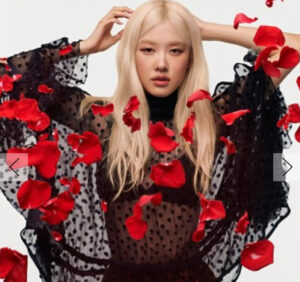
There are haute objects, and then there are Cartier objects—items whose significance lies not just in craftsmanship but in mythology. The Micro Model Bag, Panthère Graphique de Cartier, is one such piece: a miniature artifact bearing the legacy of a house that has mastered the art of visual storytelling. It is not merely an accessory. It is a talisman, a sculpture, a whisper of feline rebellion distilled into polished metal, architectural form, and tactile leather.
The panther, Cartier’s enduring muse, has prowled through the Maison’s archives since 1914. First appearing as a motif of abstraction—its fur alluded to through spots in a wristwatch—it would, under the stewardship of Louis Cartier and Jeanne Toussaint, evolve into a full-bodied emblem of fierce femininity. Toussaint, Cartier’s first female creative director and a visionary in her own right, championed the panther not just as symbol but as spirit. Through her, the panther came to represent independence, sensuality, and fearlessness. Today, that icon has been reimagined once again—this time, in micro scale, as a handbag.
The Micro Model: Monumental in Miniature
The Micro Model Bag may measure small, but its impact is architectural. The structure is boxy, deliberate, modernist in its symmetry. Its polished silhouette feels like a compact fortress—strong, minimal, assertively precise. It is a reductionist design with maximalist implications. Like a talon dipped in lacquer, it manages to exude power while occupying the smallest possible footprint.
The panther’s face—angular, stylized, yet unmistakably feline—is etched or applied in graphic contrast. It is less a literal animal depiction and more a design language: clean lines intersecting like a maze, creating the illusion of depth and motion. It is a visual puzzle, a cubist interpretation of instinct. This is not a handbag for those seeking softness. It is for those who understand the vocabulary of edge.
And yet, there is tenderness too. The scale invites intimacy. Worn crossbody or clutched in hand, the Panthère Graphique becomes a kind of personal artifact—carried like a secret, gleaming like a charm. In an age where oversized totes dominate urban streetscapes, Cartier’s micro model whispers rather than shouts. It invites the eye rather than demands it. Power in quietness; allure in concentration.
Jeanne Toussaint’s Legacy: The Panther as Feminine Ideal
The story of Cartier’s panther is inextricably linked with Jeanne Toussaint, nicknamed “La Panthère” by Louis Cartier himself. Appointed Director of Fine Jewelry in 1933, she transformed the motif from a decorative curiosity into the Maison’s most enduring signature. It was Toussaint who insisted on three-dimensional interpretations of the animal, commissioning lifelike figurative pieces that conveyed not just style but personality.
Her panther was no domestic kitten. It was a creature of command. A muse for women who sought not to be ornamental but elemental. The panther necklace, the brooch perched on a branch, the piercing emerald eyes—all became totems of modern womanhood. What the panther embodied was a refusal to conform. And that spirit is alive in the Micro Model Bag.
With the Graphique design, we see a return to abstraction. It is less about capturing the animal in mid-prowl and more about conveying its spirit through geometry and restraint. It is line work as narrative. Through monochrome or high-contrast leather palettes—sometimes in noir and ivory, sometimes brushed gold—the bag channels Toussaint’s vision while adapting it for a generation that communicates in codes: minimalist but meaning-laden.
Form, Function, and the Meaning of the Mini
While the Micro Model may appear as a novelty to the uninitiated, it is part of a broader design philosophy increasingly relevant in the luxury landscape: the art of miniaturization as elevation. To shrink an object, especially in fashion, is to distill its essence. And what Cartier offers here is pure essence.
Inside, the bag is elegantly simple: just enough room for the necessities of an evening—lipstick, cardholder, compact. But the internal dimensions are less important than the external presence. This is a bag that punctuates an outfit. Like a brooch or a ring, it anchors rather than dominates. It is less about carrying and more about bearing—style, lineage, intent.
In this way, the Micro Model recalls the evening minaudières of the 1920s and ’30s, another era in which Cartier excelled. Those cases, often hard-bodied and jewel-like, carried not just objects but status. The Graphique bag is their spiritual descendant—updated with a sculptural feline gaze.
Beyond Utility: The Bag as Sculpture
There is a sculptural quality to the Panthère Graphique that distances it from standard luxury bags. In profile, its geometry echoes Art Deco architecture—flat planes, bold outlines, a sense of permanence. The panther’s visage, whether embossed or in high relief, brings tension and vitality.
Cartier has always blurred the line between fine jewelry and accessories. Here, that intersection is particularly potent. The bag may be leather and metal, but its aura is that of a wearable sculpture—an objet d’art with a strap.
For collectors, this adds a layer of intrigue. The Graphique model becomes more than fashion—it becomes collectible. A limited-space canvas upon which the Maison rearticulates its identity. Like Cartier’s watches or Love bracelets, this bag signals a distinct aesthetic point-of-view. It is not made to chase trend. It is made to endure.
Flow
The Micro Model Bag, Panthère Graphique de Cartier is not an accessory in the conventional sense. It is a cultural artifact. It speaks not only to the evolution of Cartier’s design language, but to a century-long romance with the panther: that elusive, elegant symbol of independence and magnetism.
From the ateliers of early 20th-century Paris to the glass vitrines of contemporary maisons worldwide, the panther has evolved. But it has never softened. It remains as bold and enigmatic as ever—reimagined here in minimalist expression and maximal significance.
No comments yet.








